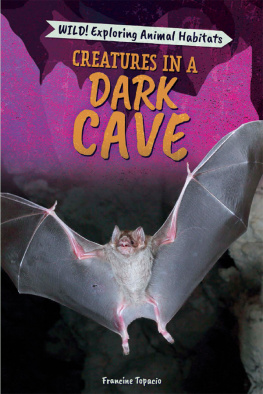

Dedicated to my brother Tom M. M. C.
To Mary, who has given my photographs the gift of speech J. L. R.

Thanks to Dot Wensick, librarian at the New England Aquarium, and Laura Burkhart,
reference librarian at the California Academy of Sciences; to Brian Nelson, senior aquarist,
New England Aquarium, for answering my questions and reviewing the manuscript;
also to Bill Curtsinger and Jeff Rotman for sharing their firsthand experiences
with many of these animals. M. M. C.
Text 2003 by Mary M. Cerullo.
Photographs 2003 by Jeffrey L. Rotman.
Illustrations 2003 by Michael Wertz.
Photograph on (Portuguese man-of-war) David Schrichte/Seapics.com
All rights reserved.
Book design by Jessica Dacher.
Typeset in Centaur and Franklin Gothic.
ISBN 978-1-4521-3399-7
The Library of Congress has previously cataloged this title under ISBN 0-8118-4050-6
Chronicle Books LLC
680 Second Street, San Francisco, California 94701
www.chroniclekids.com
Contents
What is it that makes us think twice about jumping into a sparkling blue ocean?
Are we letting our imaginations get the better of us? Have we seen one too many horror movies about killer sharks and giant squid? Or do we feel like trespassers in an alien world where we dont understand the customs and behaviors of its inhabitants?
Sea creatures have an arsenal of weapons that a ninja warrior would envy:
Teeth 
|
Size |

Spines |
Speed |

Daggers |
We dont need to feel unwelcome in the world beneath the sea if we simply remember two important rules. The first governs the residents, and the other should govern us, their guests:
Eat or be eaten.
Look but dont touch.
Once we get to know the creatures of the ocean, we can decide for ourselves whether or not they deserve their fearsome reputations.
Surprise |

Poison |
Strength |

Camouflage |
Electricity |

Venom |
The Truth Is...
This Sea Monster DOES ExistWeve Just Never Seen One Alive

Giant Squid
On old nautical charts, drawings of sea monsters decorated the unexplored regions of the ocean. These maps often featured the giant kraken with its snakelike arms wrapped around the tall masts of a sailing ship. According to legend, it could pluck a sailor off the deck or pull a ship to the bottom of the sea.
For centuries people believed these were just sea stories, that is, until the remains of several giant squid washed ashore in the late 1800s. Others were found tangled in fishing nets, dying at the surface of the sea, and some were discovered inside the stomachs of sperm whales, their chief enemies. So far, no one has ever seen a healthy, living specimen.

Not long ago, Dr. Clyde Roper, a scientist at the Smithsonian Museum in Washington, D.C., descended into the deep ocean off New Zealand in search of a giant squid in its natural habitat. The animal Dr. Roper was looking for has eyes the size of the portholes in his minisub. With its tentacles outstretched, it may measure 60 feet (18 meters) long. Its many suckers are rimmed with small hooks that dig into the flesh of its prey. Inside its mouth is a parrotlike beak that can bite through steel cable. Unlike most of us would have been, Dr. Roper was disappointed that he didnt find his giant squid.

Squid come in all sizes from 6 inches to 60 feet long.
The Truth Is...
The Most Dangerous Octopus Is One of the Smallest and Prettiest

Blue-ringed Octopus
Beautiful but deadly, the blue-ringed octopus of the South Pacific is only 6 inches (15 centimeters) long. The blue-ringed octopus often creeps across tide pools at night, hunting for crabs, snails, and small fish. If a human were to pick up the tiny octopus, its blue spots would darken in alarm, and it would nip its attacker and spit powerful venom into the wound. At first, the person might hardly notice the bite, but within a few minutes he or she would start to feel the effects of the venom, called tetrodotoxin, which is not made by the octopus itself but by several kinds of bacteria that live inside its body. The venom is sometimes strong enough to kill a human within minutes.
Giant Octopus
Imagine going through a growth spurt where you grow 6 inches (15 centimeters) in a week! Thats what the giant octopus, which lives for only three years, must do to reach 15 feet (4.6 meters) from arm tip to arm tip. Despite its size, the giant octopus doesnt attack humans, but if you stick your hand inside an octopuss den, you may find yourself gripped by an overwhelming force. Each of its suction cups holds on tightly by creating a vacuum seal inside the suckermuch like the lid on a jar of homemade jelly.
Jim Cosgrove is a Canadian biologist who has danced with giant octopuses. Dr. Cosgrove has been diving among giant octopuses in the cold waters of the North Pacific Ocean for over 20 years. More than once, a curious octopus has draped itself around Jims shoulders and spun him around a few times before letting go. Says Dr. Cosgrove, An octopus explores you and envelops you. It doesnt try to bite. Its actually enjoyable.
Next page

















